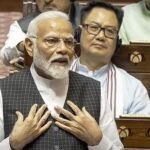In the ongoing saga between the Indian government and farm unions, a deadlock persists as both sides remain entrenched in their positions regarding agricultural reforms. At the heart of the issue lies a clash of interests, with the government advocating for diversification away from water-intensive crops like wheat and paddy, while farm unions prioritize concerns over commissions and the welfare of Punjab’s farmers.
The government’s proposal to enter into agreements with farmers on five crops—cotton, maize, tur, urad, and masur—was aimed at facilitating a transition away from traditional crops towards more sustainable alternatives. This transition, backed by government agencies like CCI and NAFED, sought to provide monetary security to farmers for the next five years, without imposing any upper limit on procurement quantities.
However, farm unions, predominantly comprising Arhtiyas (middlemen), rejected the proposal, alleging that it prioritized the interests of middlemen over those of the farmers. The unions viewed the government’s plan as a threat to their commissions earned through the trade of wheat and paddy at APMC mandis.
The standoff underscores deeper systemic issues within India’s agricultural sector, where stakeholders have divergent perspectives on modernization, sustainability, and livelihoods. While the government emphasizes the need for diversification to mitigate ecological risks and enhance farmers’ income, unions remain wary of potential disruptions to existing livelihood patterns.
The impasse has led to heightened tensions, with farm unions threatening to escalate their protests by marching to Delhi to amplify their demands. As the deadlock persists, it is imperative for both sides to engage in constructive dialogue and seek common ground that balances the interests of all stakeholders.
The situation serves as a reminder of the complexities inherent in agricultural reform efforts and the necessity for inclusive policymaking that takes into account the diverse needs and concerns of farmers, middlemen, and the broader agricultural community.
As the standoff continues, the spotlight remains on the ongoing negotiations and the potential implications for India’s agricultural landscape and the livelihoods of millions of farmers across the country.









